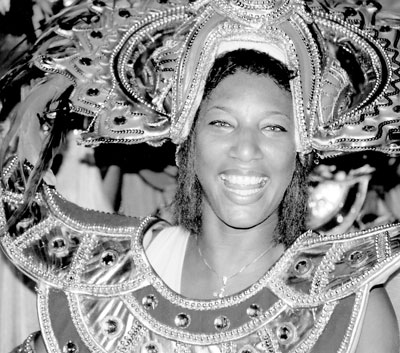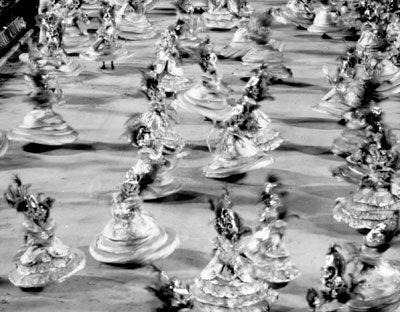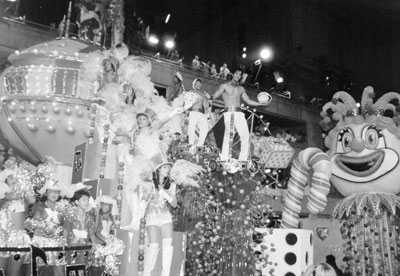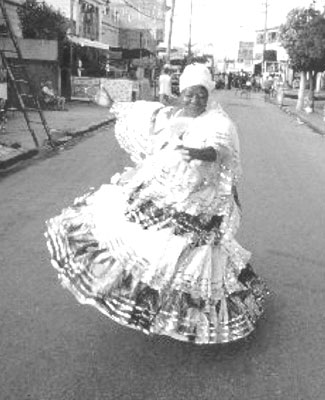Rio de Janeiro, a city that knows how to party
The origin of Carnaval dates back to the ancient Romans and Greeks who celebrated the rites of spring. In the Middle Ages, when the Catholic Church tried to suppress all pagan ideas, it failed when it came to this celebration. The Church decided to incorporate the rite into its own calendar as a period of thanksgiving.
European nations, especially France, Spain and Portugal, gave thanks by throwing parties, wearing masks and dancing in the streets. All three colonizing powers carried the tradition with them to the New World, but in Brazil it landed with a different twist.
The Portuguese, who had a taste for abandoned merriment, brought the entrudo, a prank where masked merrymakers threw water, hurled stink bombs and squirted each other with flour and strong-smelling liquids. Prior to 1840, the streets of Brazilian towns rioted during the 3-day period leading up to Ash Wednesday. Even arson was a form of entertainment.
In 1840, the Italian wife of a Rio de Janeiro hotel owner changed the Carnaval celebration forever. She sent out invitations to a masked ball, hired musicians and imported streamers and confetti. As the years went by, the masked ball became the fashion and the wild pranks played on the streets disappeared.
Parades and balls
Carnaval in Rio de Janeiro is legendary, one of the few legends which lives up to its billing. Taking up the best part of a week, Carnaval is more important to the average Brazilian than Christmas.
Carnaval is a mixture of street parades, some featuring the city’s famous samba schools. There also are carnaval balls to suit every taste and budget. Carnaval’s contagious revelry consumes the entire city.
In countries with no tradition of Carnaval, it appears that Brazil’s most famous celebration has no fixed date. But, just like Easter, it does. The last official day of Carnaval always falls on Ash Wednesday and marks the start of the Lenten season. On this day, the samba school that won the competition is announced. In 2005, Rio’s Carnaval dates are Feb. 5, 6, 7 and 8.
Carnaval is the peak holiday season in Brazil. Offices and businesses close during the festivities. Brazilians take time off and travel, so make sure to plan your trip way in advance. You are competing for a hotel room with not only other tourists but also Brazilians.
New Year’s Eve spectacle
New Year’s Eve in Rio has a style all its own. It is my favorite time to be there. The feast of Iemanjá, the Goddess of the Sea, falls on Dec. 31. Just about sunset you will notice the soft flicker of candles on the city’s beaches. As the evening progresses, a giant beach party is held the entire length of the shoreline.
White-clad devotees of the Afro-Brazilian cults macumba and candomblé puff big, fat cigars and perform rituals that last until daybreak. People of African origin have outnumbered the whites in Brazil since the 18th century. They continue to practice the religions they brought with them, which later mixed with Catholicism and Indian values.
As the beach glows in candlelight, flowers and other gifts are tossed into the waves as an offering to Iemanjá. If the waves do not bring the gifts back to shore, prosperity in the New Year is ensured.
At the stroke of midnight, from the top of the Hotel Meridien Copacabana, a waterfall of light cascades 420 feet down the sides of the hotel. It is a most unforgettable sight as the hotel is transformed into a giant Roman candle to mark the turning of the year.
Rio after dark
A great number of the city’s bars offer live music. At the discotheques and nightclubs, the action gets under way around midnight or later and continues well past the wee hours of the morning. Especially at the weekend there will be any number of both national and international musical attractions. These could range from a soloist recreating the bossa nova classics in a small bar to international stars performing to over two hundred thousand people in the Maracanã Stadium.
In 1993 a project to restore sections of downtown was initiated. On this trip, our group spent a delightful evening in the downtown area. We sauntered through several crowded corridors and walking streets that by day were virtually empty. Cafés lined the streets, which after 6 p.m. were wall-to-wall people. Office workers relaxed at outdoor tables enjoying the company of friends and their favorite beverage.
This area is where you can find the restaurant A Pequena Notável (Travesa do Comercio 13), which is in the house where Carmen Miranda once lived.
• Our destination for the evening was the trendy Rio Scenarium (Rua do Lavradio 20, Rio de Janeiro; tel. 3852-5516),
a popular restaurant/bar with live traditional Brazilian music. Performing, this particular evening, was an easy-to-listen-to group named Garrafieira. Do not expect the variety of Brazilian music that we are accustomed to hearing at home. I had no idea that the samba could be danced ballroom style. A cover charge is applied: $5.35 Tuesday-Thursday and $6.45 Friday-Saturday.
As we were still quite full after a large lunch, we ordered appetizers and shared a main dish. A portion of Bijou com queijo coalho gives you 12 crispy wafers with cheese for $3. This is a specialty from the northeastern part of Brazil. We also shared the delicious raviolis with a pear-and-gorgonzola sauce at $7.
The most expensive main dish on the menu is a fillet of beef priced at $7.85. Cocktails are also reasonably priced: caipirinha, $2.20; Jack Daniels Black Label, $4.30, and a martini, $1.80.
Rio Scenarium is in the heart of the antique section of Rio. Visit their website for more menu specialties and the current month’s music schedule.
• Canecão (Avenida Venceslau Brás 215, Botafogo, Rio de Janeiro; tel. 2543-1241) has been around for more than the 36 years that I’ve traveled to Rio. Although looking a bit worn, it exudes tradition. Everyone who is anyone has played there: Roberto Carlos, Milton Nascimento, Gal Costa, Caetano Veloso. . . For whatever their reasons, they have chosen this venue over the more modern and fancy locales.
• If you are seeking a change of pace from the traditional Brazilian clubs, the authentic British pub Lord Jim (Rua Paula Redfern 63, Ipanema, Rio de Janeiro; tel. 2259-3047) is just the ticket. It is a reference point for the British and American communities to play a game of darts and dine on shepherd’s pie. From 3 to 7 p.m. there is English tea service.
If it is your custom to indulge in a sweet before bedtime, stop at The Bakers Confeitaria (Rua Santa Clara 86, Copacabana, Rio de Janeiro; tel. 2256-7000) for delectable pastries and excellent espresso.




